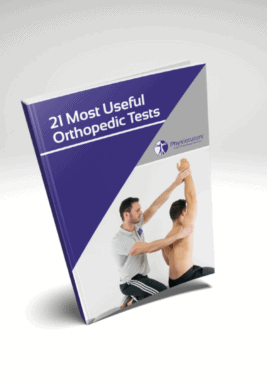Learn
Elbow Active Range of Motion (AROM)
AROM defines the range of motion through which the patient can actively move with the help of the muscles acting over that joint.
The goal of AROM is to detect possible symptoms like pain and to determine their location, quality, and intensity.
Furthermore, you will be able to see how freely your patient can move in a specific joint, while you are looking for compensatory strategies to achieve that movement.
Let’s start with flexion and extension. Ask your patient to fully extend the arms and then flex them as far as possible.
Then, with the arms flexed to approximately 90 degrees ask your patient to rotate the forearms internally for pronation and externally for supination. Make sure that the arm is not further adducted during supination to give the appearance of increased supination.
The standard values for AROM movements in the elbow are:
- Flexion: 140°-150°
- Extension: 0°-10°
- Pronation: 90°
- Supination: 90°
Read the following post in order to learn how to assess for passive range of motion in the shoulder.
21 OF THE MOST USEFUL ORTHOPAEDIC TESTS IN CLINICAL PRACTICE

References
–
Like what you’re learning?
BUY THE FULL PHYSIOTUTORS ASSESSMENT BOOK
- 600+ Pages e-Book
- Interactive Content (Direct Video Demonstration, PubMed articles)
- Statistical Values for all Special Tests from the latest research
- Available in 🇬🇧 🇩🇪 🇫🇷 🇪🇸 🇮🇹 🇵🇹 🇹🇷
- And much more!








